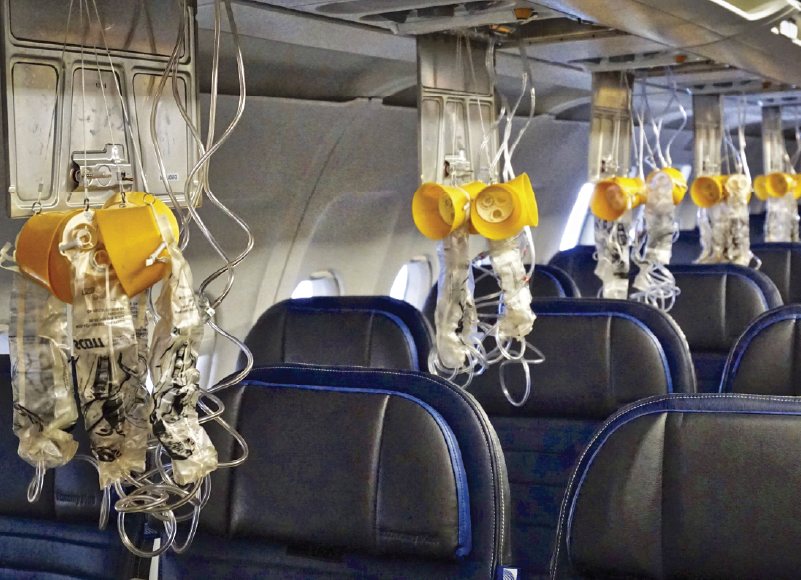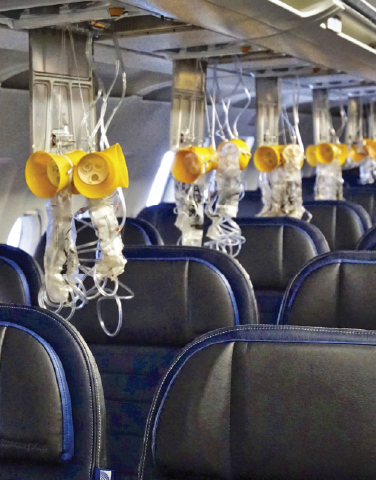Singapore Airlines and Qatar Airways are the latest victims of turbulence caused by climate change. The aviation industry has long been accustomed to dealing with turbulence, but the increasing frequency and intensity of turbulence incidents due to climate change pose new challenges. As global temperatures rise, the atmosphere becomes more unstable, leading to more frequent occurrences of clear-air turbulence (CAT), which is difficult to predict and can occur without warning. To ensure passenger safety and comfort, as well as operational efficiency, airlines must adopt comprehensive strategies to pre-empt and prepare for this escalating risk. This article explores practical strategies airlines can implement to manage and mitigate turbulence risks effectively.
Understanding the Impact of Climate Change on Turbulence
Climate change affects atmospheric conditions in various ways, contributing to increased turbulence. Rising temperatures lead to more energetic jet streams and greater thermal gradients, which enhance atmospheric instability. This instability can increase the likelihood of CAT, which occurs at high altitudes and is invisible to both pilots and radar. As a result, turbulence incidents are expected to become more frequent and severe, posing significant challenges for the aviation industry.
Strategies for Managing and Mitigating Turbulence Risks
- Enhancing Turbulence Prediction and Monitoring
Accurate prediction and real-time monitoring of turbulence are crucial for mitigating its impact. Advances in technology and data analytics offer new opportunities for improving turbulence forecasting.- Weather Radar Systems: Modern aircraft are equipped with advanced weather radar systems that can detect turbulence associated with convective weather. Enhancing these systems to improve their sensitivity and range can provide better early warnings to pilots.
- Satellite and Lidar Technology: Using satellite data and Lidar (Light Detection and Ranging) technology, airlines can obtain more detailed and accurate information about atmospheric conditions. This data can be integrated into turbulence prediction models to improve forecasting accuracy.
- Data Sharing and Collaboration: Establishing data-sharing agreements between airlines, meteorological agencies, and research institutions can facilitate the exchange of turbulence-related information. Collaborative efforts can enhance the development of comprehensive turbulence databases and prediction models.
Example: Delta Air Lines has invested in advanced weather technology, including Lidar systems, to enhance its turbulence prediction capabilities. This technology provides pilots with more accurate and timely information, enabling better decision-making during flights.
- Developing and Implementing Turbulence Response Procedures
Standardized response procedures are essential for managing turbulence incidents effectively. These procedures should be integrated into pilot training and operational protocols.- Turbulence Training for Pilots: Regular training programs should be conducted to ensure pilots are well-prepared to handle turbulence. Training should cover turbulence recognition, appropriate response techniques, and communication protocols.
- Automated Flight Management Systems: Enhancing automated flight management systems to include turbulence response capabilities can assist pilots in navigating turbulent conditions. These systems can provide real-time recommendations for altitude adjustments and flight path changes.
- Passenger Communication and Safety Measures: Clear communication with passengers during turbulence is vital for maintaining calm and ensuring safety. Airlines should develop standardized communication protocols and ensure cabin crew are trained to manage turbulence-related situations.
Example: The International Air Transport Association (IATA) has developed turbulence awareness and training programs that provide airlines with guidelines for turbulence management. These programs include best practices for pilot training, turbulence reporting, and passenger communication.
- Optimizing Flight Routes and Altitudes
Strategic route planning and altitude optimization can help minimize exposure to turbulence. By leveraging advanced forecasting tools and historical turbulence data, airlines can design flight paths that avoid known turbulence-prone areas.- Dynamic Route Planning: Implementing dynamic route planning systems that can adjust flight paths in real-time based on current and forecasted turbulence conditions can reduce the risk of encountering turbulence.
- Altitude Optimization: Pilots should be trained to utilize altitude optimization techniques, such as cruising at higher altitudes to avoid turbulence associated with jet streams and other atmospheric phenomena.
- Turbulence Mapping: Creating and maintaining detailed turbulence maps that highlight areas with a high probability of turbulence can aid in route planning and decision-making.
Example: Japan Airlines (JAL) uses sophisticated route optimization software that analyzes real-time weather data and historical turbulence patterns to adjust flight paths dynamically. This approach has significantly reduced turbulence encounters and improved passenger comfort.
- Investing in Aircraft Design and Technology
Advances in aircraft design and technology can enhance the ability to withstand and mitigate the effects of turbulence.- Aircraft Structure and Materials: Developing aircraft with improved structural integrity and materials that can absorb and dissipate turbulence-induced forces can enhance safety and comfort.
- Active Turbulence Mitigation Systems: Implementing active turbulence mitigation systems, such as gust alleviation technology, can help stabilize the aircraft during turbulent conditions. These systems use sensors and control surfaces to counteract turbulence-induced movements.
- Cabin Design Improvements: Designing cabin interiors to minimize the impact of turbulence on passengers can enhance safety and comfort. This includes secure seating arrangements, reinforced overhead bins, and improved seatbelt designs.
Example: Boeing has been researching and developing advanced turbulence mitigation systems, including adaptive wing technology that adjusts to turbulent conditions in real-time. These innovations aim to improve aircraft stability and passenger comfort during turbulence.
- Enhancing Turbulence Reporting and Analysis
Accurate and timely reporting of turbulence incidents is essential for understanding and mitigating turbulence risks.- Automated Turbulence Reporting Systems: Implementing automated turbulence reporting systems that transmit real-time turbulence data to ground stations can enhance situational awareness and improve turbulence forecasting models.
- Turbulence Incident Databases: Creating centralized databases that compile turbulence incident reports from various airlines can facilitate data analysis and trend identification. This information can be used to improve turbulence prediction and response strategies.
- Post-Flight Analysis: Conducting detailed post-flight analyses of turbulence encounters can provide valuable insights into the effectiveness of response procedures and highlight areas for improvement.
Example: The Federal Aviation Administration (FAA) has established the Aviation Safety Reporting System (ASRS), which collects and analyzes turbulence incident reports from pilots and airlines. The data is used to identify trends and develop safety recommendations.
- Promoting Industry Collaboration and Research
Collaboration between airlines, regulatory bodies, and research institutions is essential for advancing turbulence management strategies.- Industry Working Groups: Establishing industry working groups that focus on turbulence risk management can facilitate the exchange of knowledge and best practices. These groups can also advocate for regulatory changes and funding for research initiatives.
- Research and Development Funding: Investing in research and development projects that explore new technologies and methods for turbulence prediction and mitigation can drive innovation in the field.
- International Cooperation: Collaborating with international aviation organizations, such as the International Civil Aviation Organization (ICAO), can promote the adoption of global standards and practices for turbulence management.
Example: The National Center for Atmospheric Research (NCAR) collaborates with airlines, regulatory bodies, and research institutions to study turbulence and develop advanced prediction models. These efforts have led to significant improvements in turbulence forecasting and management.
Conclusion
The increasing frequency and intensity of turbulence incidents due to climate change present significant challenges for the aviation industry. To ensure passenger safety and operational efficiency, airlines must adopt a proactive and comprehensive approach to turbulence risk management. By enhancing turbulence prediction and monitoring, developing standardized response procedures, optimizing flight routes and altitudes, investing in aircraft design and technology, improving turbulence reporting and analysis, and promoting industry collaboration and research, airlines can effectively pre-empt and prepare for turbulence risks.
The examples from Delta Air Lines, Japan Airlines, Boeing, and various industry organizations illustrate that with the right strategies and commitment, the aviation industry can navigate the challenges posed by climate change and ensure a safer and more comfortable flying experience for passengers. As the climate continues to change, ongoing innovation and collaboration will be essential for mitigating turbulence risks and maintaining the resilience of the aviation sector.















